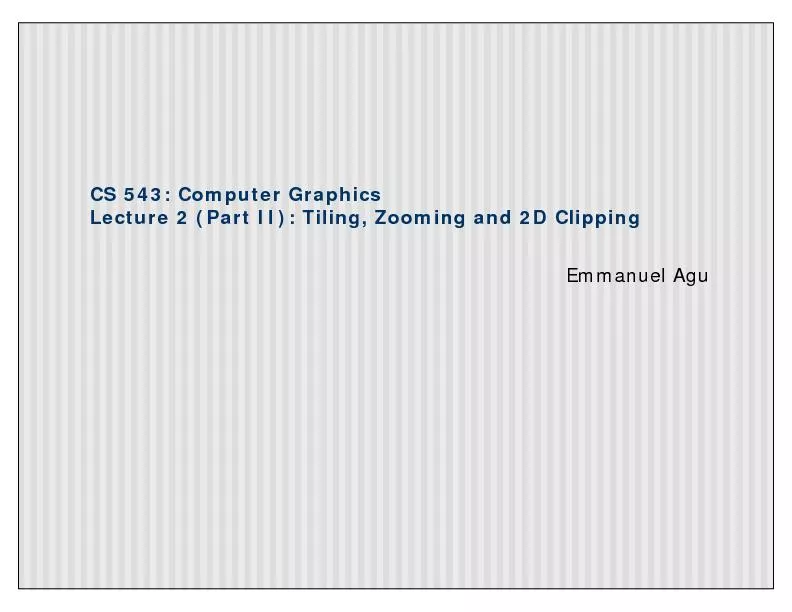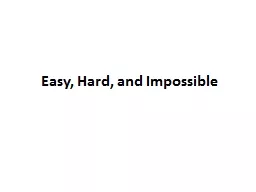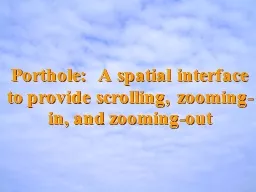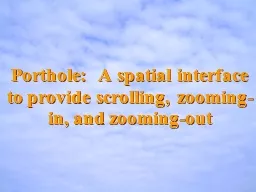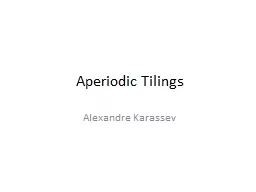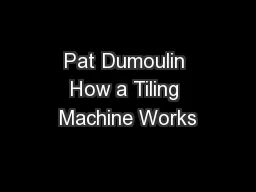PDF-CS 543: Computer GraphicsLecture 2 (Part II): Tiling, Zooming and 2D C
Author : celsa-spraggs | Published Date : 2016-08-27
Applications of WV MappingnV ApplicationsnZooming in on a portion of objectnTiling WV in loop adjacent viewportsFlipping drawingsnMapping different window and viewportaspect
Presentation Embed Code
Download Presentation
Download Presentation The PPT/PDF document "CS 543: Computer GraphicsLecture 2 (Part..." is the property of its rightful owner. Permission is granted to download and print the materials on this website for personal, non-commercial use only, and to display it on your personal computer provided you do not modify the materials and that you retain all copyright notices contained in the materials. By downloading content from our website, you accept the terms of this agreement.
CS 543: Computer GraphicsLecture 2 (Part II): Tiling, Zooming and 2D C: Transcript
Download Rules Of Document
"CS 543: Computer GraphicsLecture 2 (Part II): Tiling, Zooming and 2D C"The content belongs to its owner. You may download and print it for personal use, without modification, and keep all copyright notices. By downloading, you agree to these terms.
Related Documents

